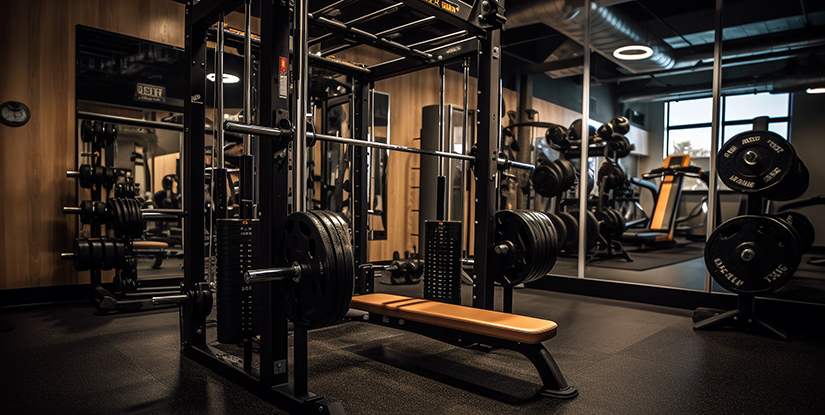Fitness Equipment Suppliers: Sourcing, Quality & Support

Overview of Fitness Equipment Suppliers
Selecting the right fitness equipment suppliers is a strategic decision for gyms, health clubs, rehabilitation centers, and retailers. Reliable suppliers provide not only high-quality products but also consistent lead times, regulatory compliance, and after-sales support. A professional sourcing approach reduces operational risk, improves member satisfaction, and protects brand reputation.
Key Selection Criteria
- Product quality and durability — assess materials, frame construction, and expected lifecycle.
- Certifications and compliance — ISO, CE, ASTM, and regional safety approvals matter for commercial installations.
- Production capacity and lead time — verify the supplier's ability to meet order volumes and deadlines.
- After-sales support — warranty terms, spare parts availability, and technical service networks.
- Price transparency and total cost of ownership — factor shipping, installation, maintenance, and disposal.
Understanding Product Range
Suppliers vary from specialist manufacturers focusing on strength equipment, cardio machines, and functional training rigs to full-service vendors offering complete turnkey solutions. Determine whether you need standardized product lines for retail or customizable commercial-grade equipment for high-traffic environments. Evaluate the modularity of systems and compatibility with accessories to maximize long-term value.
Quality Assurance and Compliance
Quality assurance should be verified through factory audits, third-party testing reports, and sample inspections. Commercial equipment must meet structural and electrical safety standards. Request documentation for load tests, upholstery materials, and welding records. Insist on traceability for high-wear components such as cables, pulleys, and bearings to enable proactive maintenance planning.
Supply Chain and Logistics
Efficient logistics reduce total procurement cost and minimize downtime. Evaluate the supplier's freight partners, packing standards, and experience with customs clearance. Consider options for consolidated shipping, drop-shipping to multiple sites, and local warehousing for spare parts. Clear Incoterms and shipping lead times are essential to avoid unexpected charges.
Pricing Structures and Contracting
Negotiate pricing based on volume bands, repeat orders, and bundled services such as installation and extended warranties. Use clear contracts outlining delivery milestones, penalty clauses for delays, and acceptance criteria for equipment. For larger projects, include performance bonds or phased payments tied to installation and commissioning.
Customization and OEM Services
Many suppliers offer OEM/ODM services allowing brand-specific finishes, upholstery, software branding for connected equipment, and bespoke adjustments to dimensions or resistance curves. Validate minimum order quantities, tooling costs, and prototype timelines before committing to custom runs.
After-Sales Support and Spare Parts
Robust after-sales service differentiates premium suppliers. Confirm average response times for technical support, availability of local technicians, and stock levels for consumables. A documented spare parts catalogue and service manuals simplify long-term maintenance and reduce downtime.
Sustainability and Innovation
Leading suppliers integrate sustainable materials, energy-efficient motor systems, and recyclable packaging. Evaluate suppliers on their environmental policies, lifecycle assessments, and innovation roadmaps such as cloud-enabled equipment, user analytics, and remote diagnostics.
How to Vet Potential Suppliers
- Request references and recent project case studies for similar facilities.
- Perform on-site factory inspections or engage third-party auditors.
- Order samples or pilot units to evaluate real-world performance.
- Verify certifications, insurance coverage, and financial stability.
- Establish communication protocols and escalation paths before signing.
Practical Negotiation Tips
Align on priorities—price, lead time, warranty, or customization—and use those as negotiation levers. Secure fixed-price periods, obtain multi-year service agreements, and request price protection for component cost increases. Build long-term partnerships with suppliers that offer continuous improvement and collaborative product development.
Conclusion
Choosing fitness equipment suppliers requires a comprehensive evaluation of product quality, compliance, logistics, and support capabilities. A structured procurement process that includes factory vetting, sample testing, and clear contractual terms will mitigate risk and ensure operational continuity. Prioritize suppliers that demonstrate technical competency, transparent pricing, and a commitment to innovation.
FAQs
- How do I verify a supplier's credibility? Check certifications, request references, and conduct factory audits.
- What certifications matter most? ISO, CE, and relevant regional safety standards for commercial equipment.
- How long is a typical warranty? Commercial warranties commonly range from 1 to 5 years; confirm parts and labor terms.
- Should I buy OEM or retail equipment? Choose OEM for branded customization and retail for standard consumer lines.
- How can I manage shipping costs? Consolidate orders, use local warehousing, and negotiate freight terms.
- What are essential spare parts to stock? Cables, pulleys, bearings, upholstery, and electronic control modules.
- Is on-site installation necessary? For commercial setups, professional installation ensures safety and warranty compliance.
- How quickly should suppliers respond to service requests? Aim for initial response within 24–72 hours and on-site support as agreed.
- How do I handle compliance in different regions? Verify local certifications and engage customs specialists for cross-border shipments.

